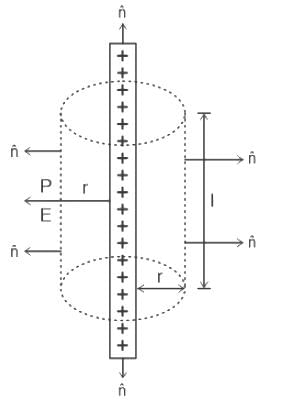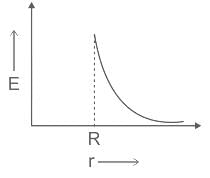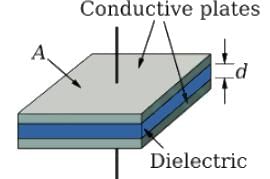Physics: CUET Mock Test - 1 - CUET MCQ
30 Questions MCQ Test CUET Mock Test Series - Physics: CUET Mock Test - 1
The amount of force exerted on a unit positive charge in an electric field is known as _____
An infinitly long wire is charged uniformly with charge density λ and placed in air, the electric field at distance r from wire will be:
Two point charges (-q) and (+4q) are placed at separation 'r'. Where should a third charge be placed so that entire system of charges becomes in equilibrium?
The variation of electric field with respect to distance from centre of a charged conducting spherical shell of radius R is given by :
A parallel plate capacitor having cross-sectional area 'A' and separated by distance 'd' is filled by copper plate of thickness b. It's capacitance is :
Conductivity of semiconductors _______ with temperature.
In terms of energy bands, _______ have a full valence band
Conductors are those which have ________ valence and conduction bands.
Which of the following in not a classification of solids, (according to the band theory)
Electric potential due to a point charge q at a distance r from the point is _______ (in the air).
In series connection of resistors, what happens to the current across each resistor?
The direction of electric field created by a negative charge is _______
Calculate electric potential due to a point charge of 10C at a distance of 8cm away from the charge.
What is the equivalent resistance of series combination of 3 resistors?
Electric field inside a hollow conducting sphere ______
If the force acting on a point charge kept on the axis of an electric dipole is F, what will be the amount of force if the distance of the point charge is doubled from the dipole?
What is the amount of work done to bring a charge of 4 * 10-3C charge from infinity to a point whose electric potential is 2 * 102V?
Identify the combination which is not a series connection.
Electric field due to a uniformly charged hollow sphere at a distance of r (where r is greater than the radius of the sphere) is __________
If electric field intensity at a certain distance from a dipole on its axis is E1 and at the same distance but on the perpendicular bisector of the dipole is E2, then __________
Two point charges 10C and -10C are placed at a certain distance. What is the electric potential of their midpoint?
Three equal positive charges are kept at the corners of an equilateral triangle. What will be the vector sum of the forces acting on the particles?
|
8 docs|148 tests
|



 .
.


 ------(1)
------(1)





 Substituting the values, we get potential=
Substituting the values, we get potential=  Though in practice, this huge value of electric potential is not present.
Though in practice, this huge value of electric potential is not present. Therefore the electric field is proportional is (1/(r2)) (if r > radius of the sphere). But if r < radius of the sphere the electric field will be zero i.e. electric field inside a hollow sphere is always zero.
Therefore the electric field is proportional is (1/(r2)) (if r > radius of the sphere). But if r < radius of the sphere the electric field will be zero i.e. electric field inside a hollow sphere is always zero.
















